Blough:
A very interesting find. As I have mentioned on previous posts regarding the No.1 High Speed Lathe, it was introduced to the Dealers on
May 29, 1931 by Hendey Vice President S.H. Childs (later convicted of embezzling from Hendey). It was an attempt to jump start business
with several new products, but 1931, 1932 and 1933 were very lean years at Hendey. The total number of lathes produced during each of
those years was 71, 9 and 17 respectively. The first No.1 High Speed lathe was sold on March 29, 1933, two years after the introduction.
Hendey had a policy of making the prototype and using it in the factory for about a year, prior to actual manufacturing, to correct any
problems. In 1929, W.P. Norton and Constant Bouillon decided to experiment with a lathe capable of using the new High Speed Steels. A
standard 12x5 Cone Head was redesigned and the new lathe was completed during the first week of September 1929. After the normal "debug-
ging" period it was shown at the Cleveland Machinery Show in 1930 to very favorable reviews. The General Electric Company was impressed
enough with it that they bought the lathe and a set of No.2 collects. G.E. wanted even finer feeds than were standard, so a special chart
featuring feeds as fine as 3700 threads per inch were supplied to the company (chart No. A12-678). It would be another three years before
another High Speed Lathe was sold. You will notice that I didn't refer to the prototype as a No.1 High Speed Lathe because it was known
as a 12x5 High Speed Lathe in the Hendey records. One more thing, the Serial Number of the prototype was 27790. When you get a chance, scrape the grease off of the bed under the chuck, you should find the 12x5 cast into the bed.
The picture of the Gear Box shows that is most likely set for a feed of .00182 per inch or 548 threads per inch. Since I can't determine
with any accuracy the exact tooth count of the "A" and "C" gears and assuming that the "B" gear is also a 120T, it is only an educated
guess.
Also note the built-in, lever operated, Collet Closer. A few extra parts are required to be able use it, but it is much more convenient
than the Handwheel operated Draw-in Attachment.
Hendeyman


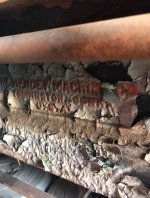




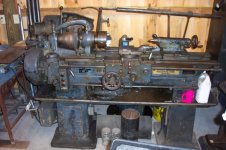
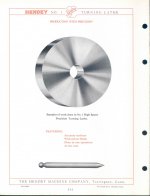

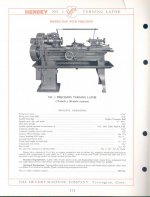







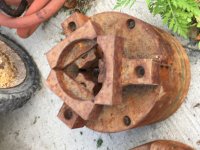

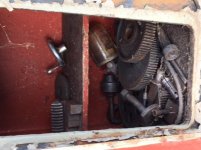


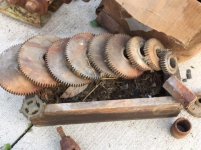


 Especially since I have never restored a Hendey before, Might need to start a rebuild thread to keep constructive criticism going and get some pier reviews on each of my planed actions throughout the restoration. I know a few items must be missing like the rear cover on collet closing mechanism, then replaced with a top-of-the-line sheet metal cover (Ref. Post #6 Pic 1)
Especially since I have never restored a Hendey before, Might need to start a rebuild thread to keep constructive criticism going and get some pier reviews on each of my planed actions throughout the restoration. I know a few items must be missing like the rear cover on collet closing mechanism, then replaced with a top-of-the-line sheet metal cover (Ref. Post #6 Pic 1)
